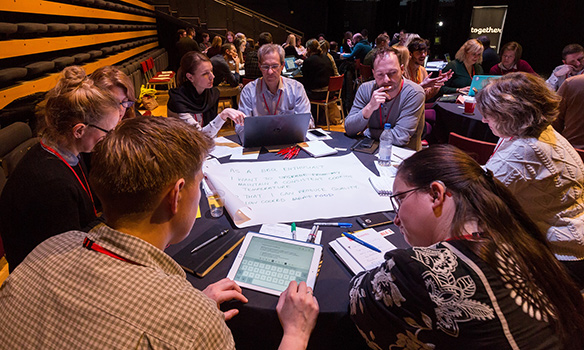We’ve come to the end of our long running and very successful University-wide change Programme, Go Mobile.
Over the duration of the programme, we created a total of 138 websites in the T4 content management system. We trained countless numbers of new editors in planning and writing web content, using video and imagery and technical skills in T4. We deleted literally thousands of pages of content that were old or redundant. Each site is now smaller, easier to manage and better focused on providing answers to its users.
I’m sure you can imagine that reaching this milestone has been cause for much celebration.
The next task for the project team is to calculate all the figures and benchmark the improvements. We’ll use this to produce a report which outlines the scale and nature of the benefits achieved by the programme.
The Go Mobile programme has been a very complex and multi-layered project to work on which has made it a great challenge for all of us. We’ve been using Agile project management methodology to make sure we stay on track and deliver a new batch of sites every five weeks. This has been a new way of working and has been a big part of our success. The model allows people to collaborate closely but also to respond quickly to changes and anticipate problems early.
The programme finished on Friday 10 March 2017, bang on schedule, with the last batch of sites going live. It’s fair to say that we’re all shattered but delighted to have reached such a significant milestone and to have achieved everything we set out to.
On the blog over the next couple of months, we’ll be highlighting some areas where we’ve made improvements to the University’s web presence, including:
- content design
- information architecture
- readability
- responsive design
We’ll use examples from across the sites to demonstrate what has changed. We’ll also look at how we’ve worked with our community of web editors to develop their skills and understanding of web publishing.


